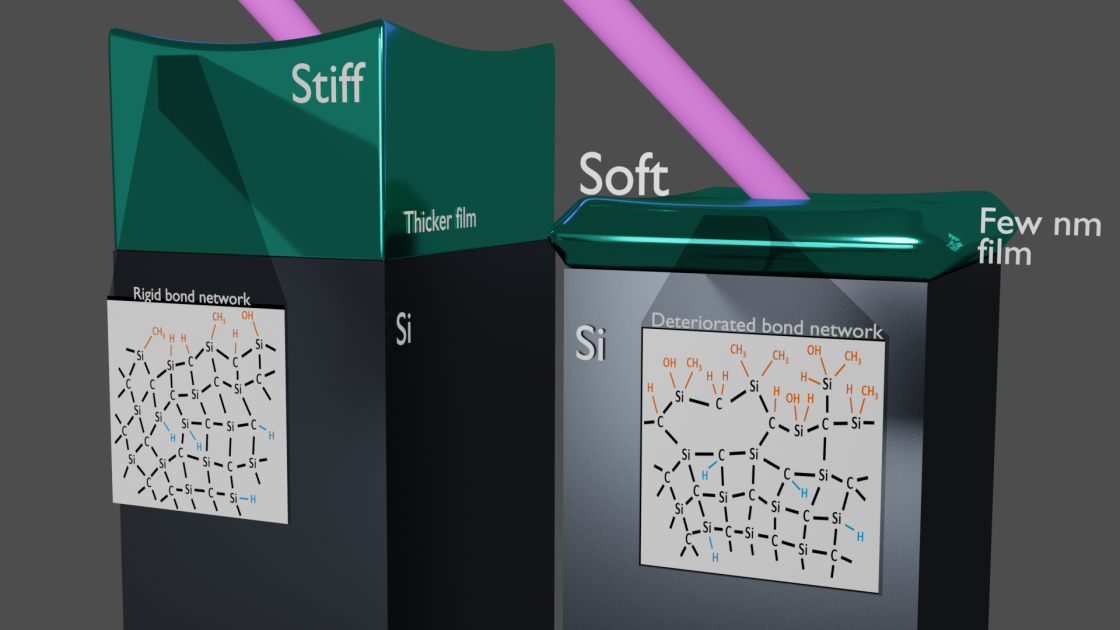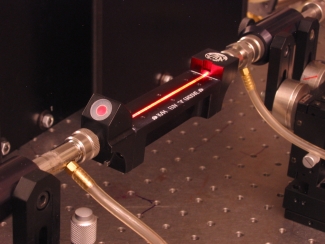CU Boulder researchers have used ultra-fast extreme ultraviolet lasers to measure the properties of materials more than 1,000 times thinner than the width of a human hair.
The team, led by scientists at JILA, reported its new feat of wafer-thinness in the journal Physical Review Materials on July 13. The group's target, a film just 5 nanometers thick, is the thinnest material that researchers have ever been able to fully probe, said study coauthor Joshua Knobloch.
"This is a record-setting study to see how small we could go and how accurate we could be," said Knobloch, a graduate student in the KM Group at JILA.
He added that when things get small, the normal rules of engineering don't always apply. The group discovered, for example, that some materials seem to get a lot softer the thinner they become.
The researchers hope that their findings may one day help scientists to better navigate the often-unpredictable nano world, designing tinier and more efficient computer circuits, semiconductors and other technologies.
"If you're doing nanoengineering, you can't just treat your material like it's a normal big material," said Travis Frazer, lead author of the new paper and a former graduate student at JILA. "Because of the simple fact that it's small, it behaves like a different material."
"This surprising discovery—that very thin materials can be 10 times more flimsy than expected—is yet another example of how new tools can helps us to understand the nanoworld better," said JILA Fellow Margaret Murnane.




 The Physics Frontiers Centers (PFC) program supports university-based centers and institutes where the collective efforts of a larger group of individuals can enable transformational advances in the most promising research areas. The program is designed to foster major breakthroughs at the intellectual frontiers of physics by providing needed resources such as combinations of talents, skills, disciplines, and/or specialized infrastructure, not usually available to individual investigators or small groups, in an environment in which the collective efforts of the larger group can be shown to be seminal to promoting significant progress in the science and the education of students. PFCs also include creative, substantive activities aimed at enhancing education, broadening participation of traditionally underrepresented groups, and outreach to the scientific community and general public.
The Physics Frontiers Centers (PFC) program supports university-based centers and institutes where the collective efforts of a larger group of individuals can enable transformational advances in the most promising research areas. The program is designed to foster major breakthroughs at the intellectual frontiers of physics by providing needed resources such as combinations of talents, skills, disciplines, and/or specialized infrastructure, not usually available to individual investigators or small groups, in an environment in which the collective efforts of the larger group can be shown to be seminal to promoting significant progress in the science and the education of students. PFCs also include creative, substantive activities aimed at enhancing education, broadening participation of traditionally underrepresented groups, and outreach to the scientific community and general public.